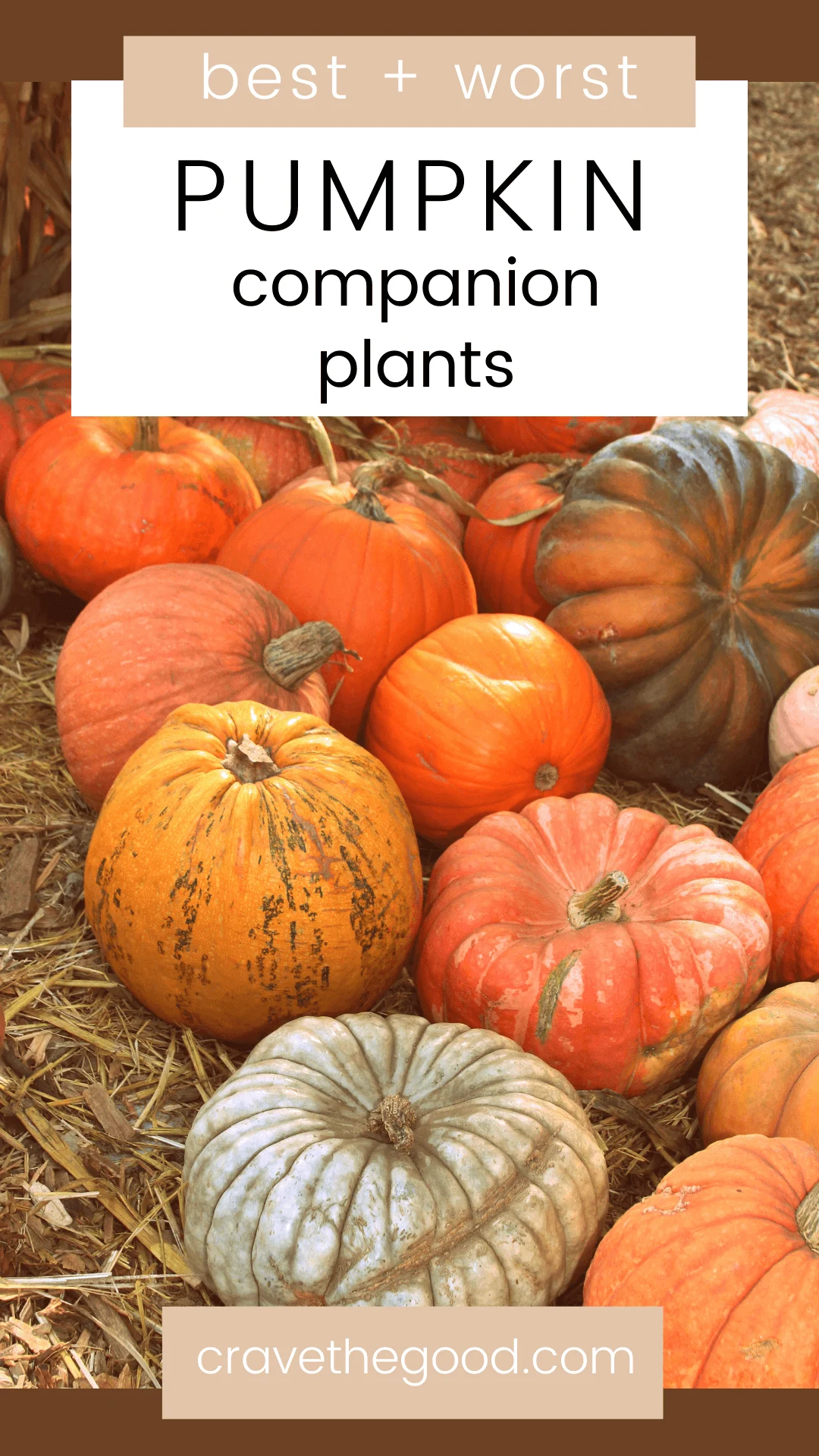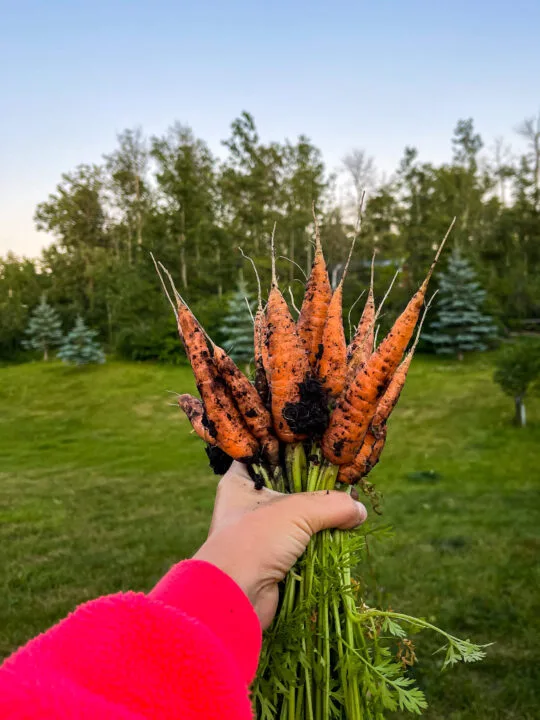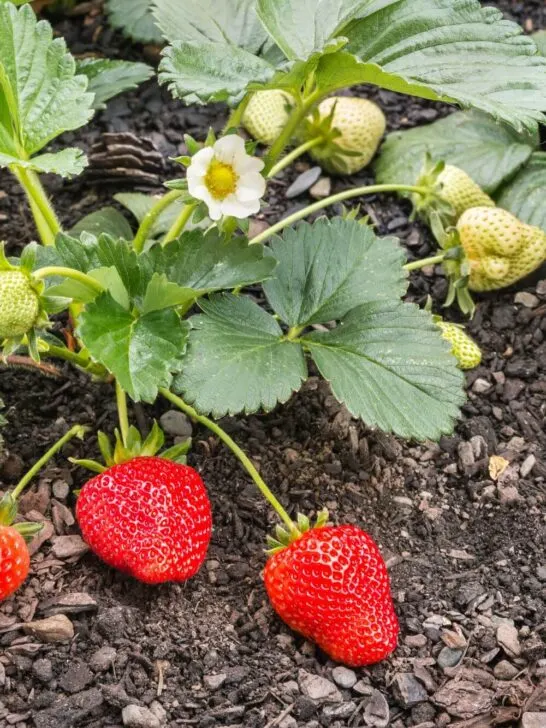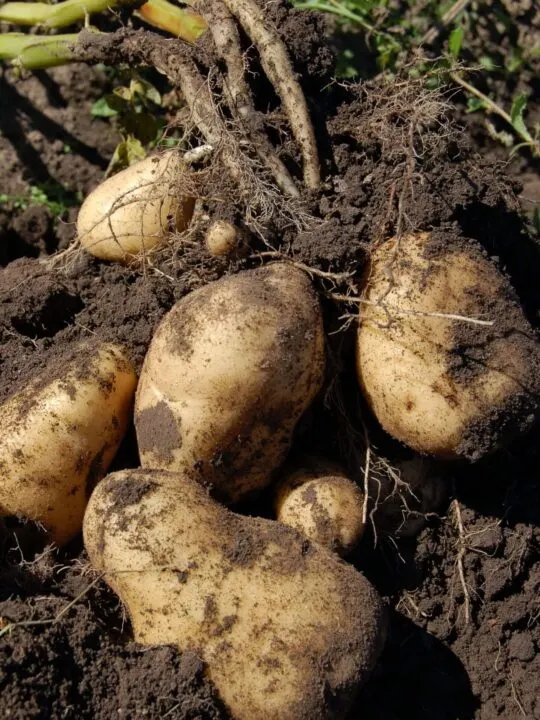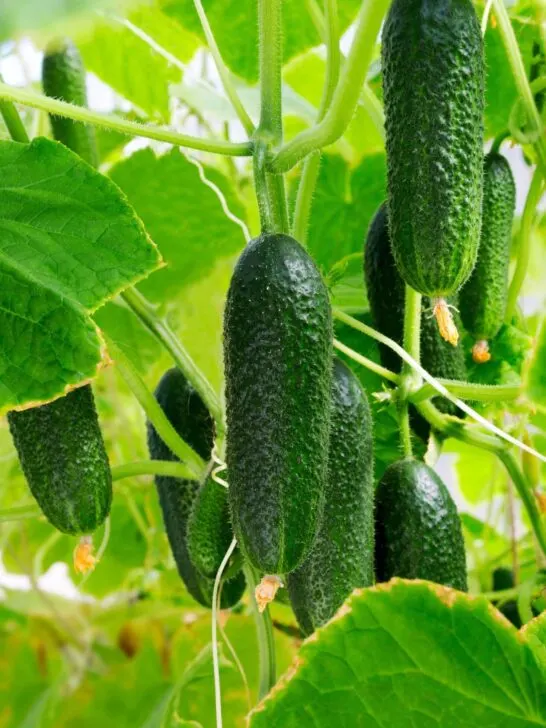When planting pumpkins, it's important to consider the plants that will be their companions in the vegetable garden. Learn which are the best and which plants you should avoid planting near pumpkins in order to get the most benefit from your crop!
Pumpkin plants are members of the Cucurbitaceae family. They are annual vines that grow quickly and can reach a length of 15 feet or more. The leaves are broad and deeply lobed. Pumpkins are typically harvested in the autumn when they are mature.
Pumpkin skin can be any color, including white, blue, and classic orange. The flesh is either orange or yellow and pumpkins are often grown for their edible fruit or Halloween carving! We love to make smoked pumpkin seeds and homemade pumpkin puree with our homegrown pumpkins!
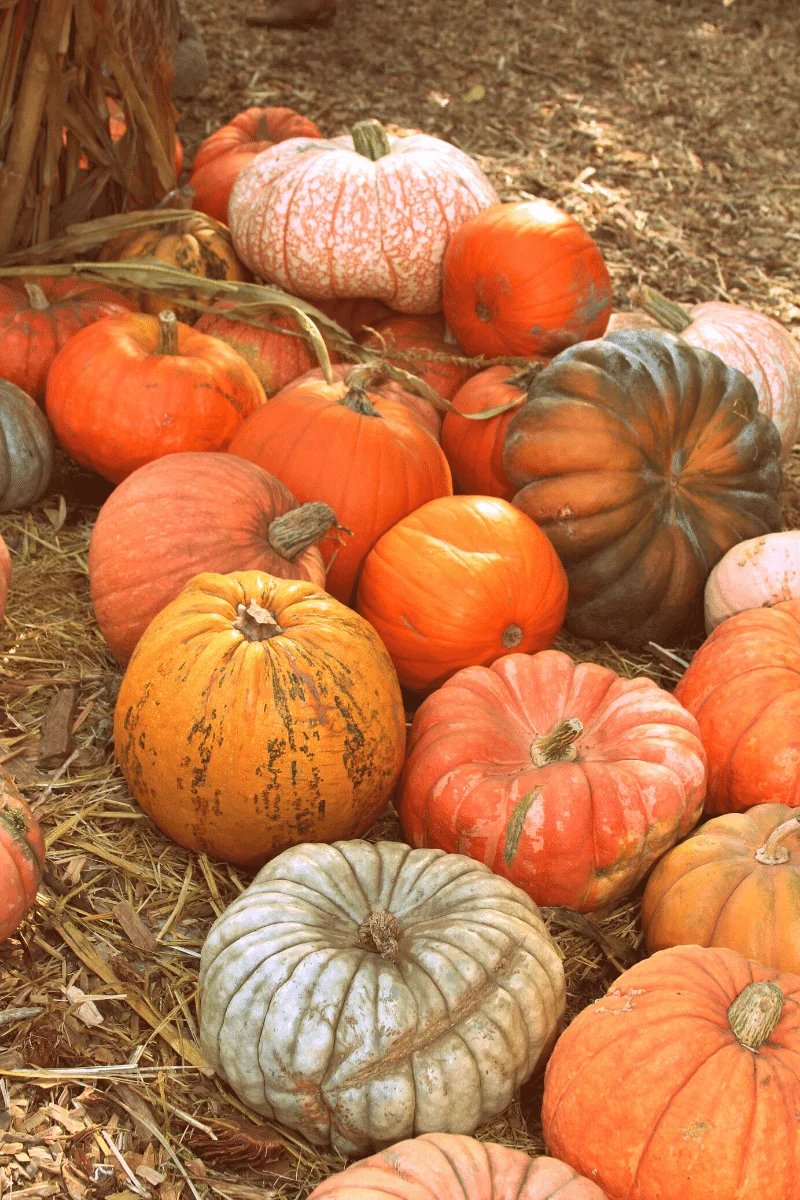
As an Amazon Associate I earn from qualifying purchases.
Jump to:
What Is Companion Planting?
Companion planting is the practice of planting two or more plants together for mutual benefit. Companion plants can help improve the growth and health of each other, while also repelling pests or attracting beneficial insects. By planting companion plants near your pumpkin plants, you can improve the overall health and productivity of your pumpkin patch!
Companion planting is like food gardening, but on a smaller scale!
What Are The Benefits?
This gardening method can be used to benefit other crops and improve overall yields through increased production or better quality fruit/vegetables. Companion planting can help to protect from pests and diseases without using toxic chemicals, improve growth and vigor, and in some cases, even flavor!
Additionally, companion plants can attract pollinators and beneficial insects, which will then prey on pests. Finally, companion plants can also improve soil health, through nitrogen fixation and nutrient cycling.
All of these benefits provide optimal growing conditions for pumpkin plants, leading to a healthy and productive crop!

Considerations:
When choosing companions for your pumpkin plant, there are a few things to keep in mind.
Think about both plants; Will they shade each other and compete for sunlight, space, or nutrients in the soil? Will they attract or repel destructive insects and pests? Will the companion plants negatively affect each other?
The main concern with companion planting pumpkins is their vining, sprawling growth pattern, and ability to grow over, choke out and starve other plants by blocking their sunlight. Pumpkins are ruthless!
Best Pumpkin Companion Plants
Corn:
Corn is a great companion plant for pumpkins! It's part of the three sisters' companion group, a traditional Native American companion planting method. Corn occupies a different growing space, it grows tall and slender while a pumpkin plant grows short and wide.
Corn is particularly beneficial if you're going to add pole beans or another vining nitrogen fixer.
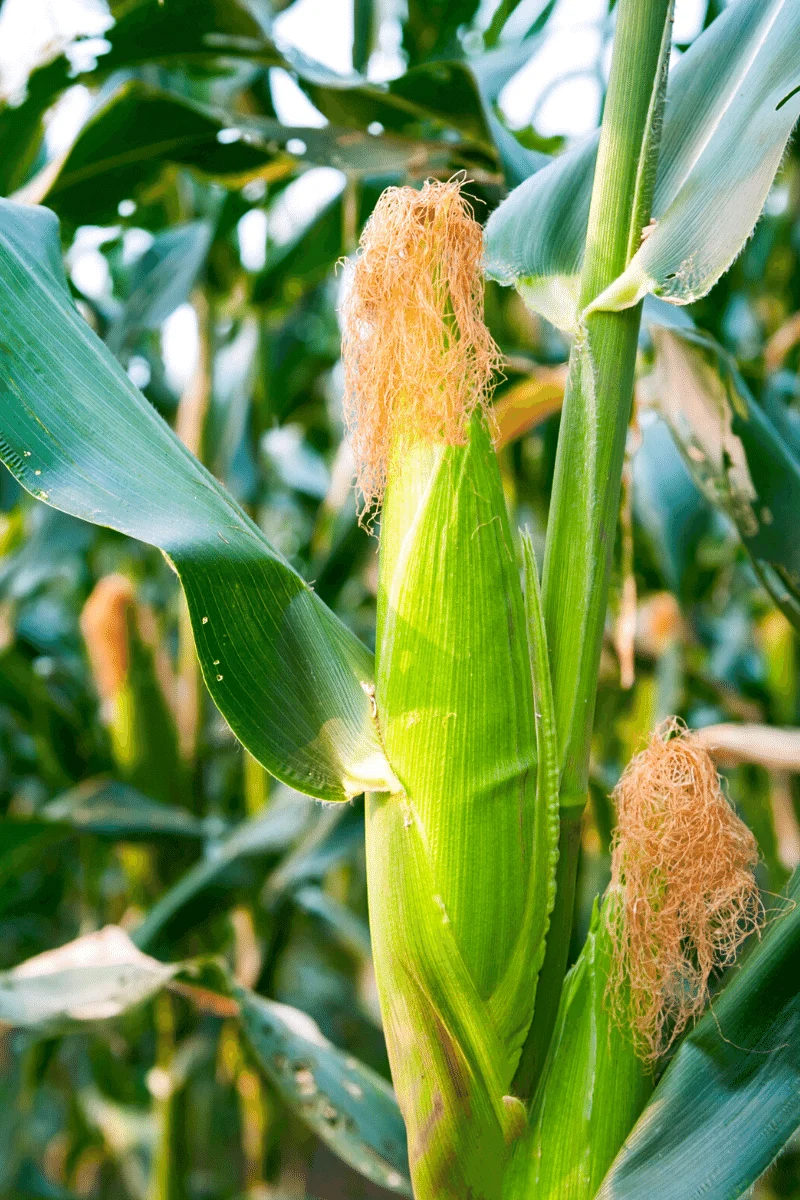
Pole beans:
Are the last third of the three sisters' companions. These beans trellis up the tall corn, ensuring that they do not encroach on the pumpkin plants. The benefit to using pole beans is that they have the ability to fix nitrogen into the soil for the hungry pumpkins!
Bush beans and other non-climbing legumes will also fix nitrogen, but their bush structure will undoubtedly compete with the pumpkins for space and sunlight.
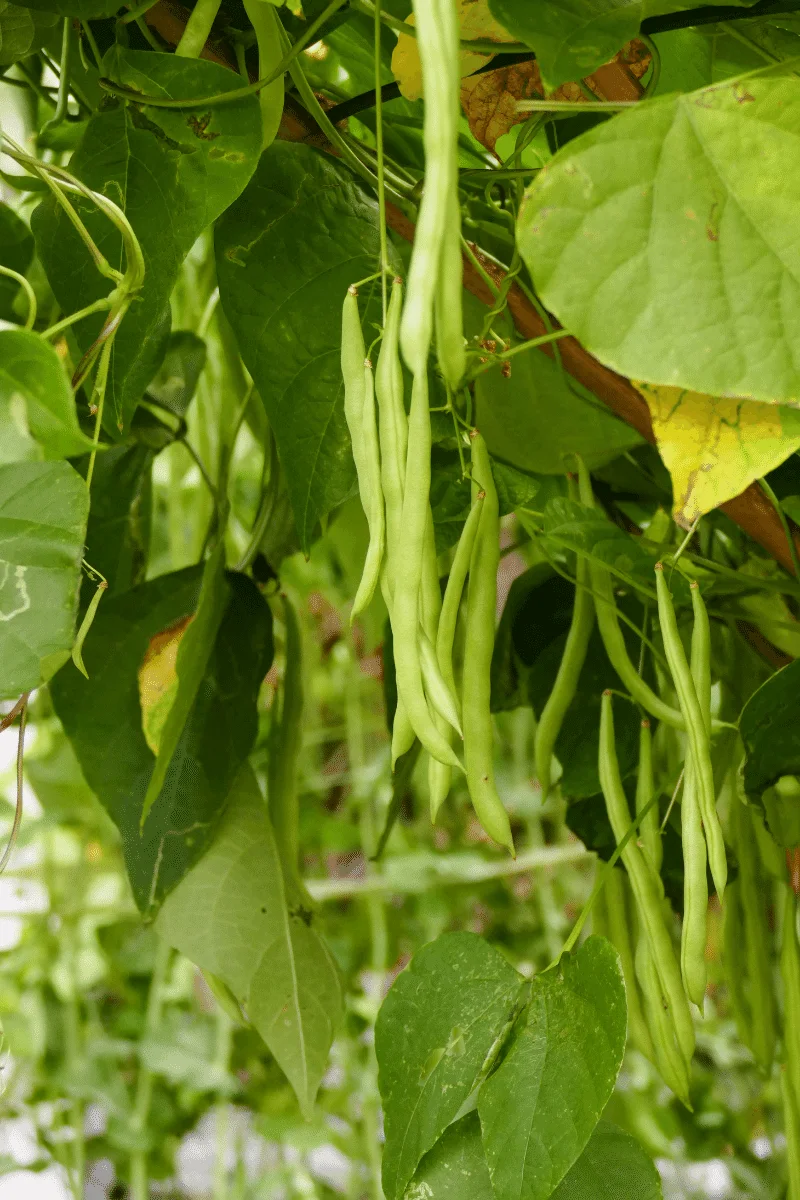
Marigolds:
Another great sacrificial plant! Marigolds release a strong scent that deters pests from neighboring plants. They also help improve soil health. Planting marigolds around your pumpkin patch is a great deterrent for pests and will help to attract pollinators.
Marigolds are best planted as a border around your pumpkin garden rather than interspersed throughout the rows of plants.
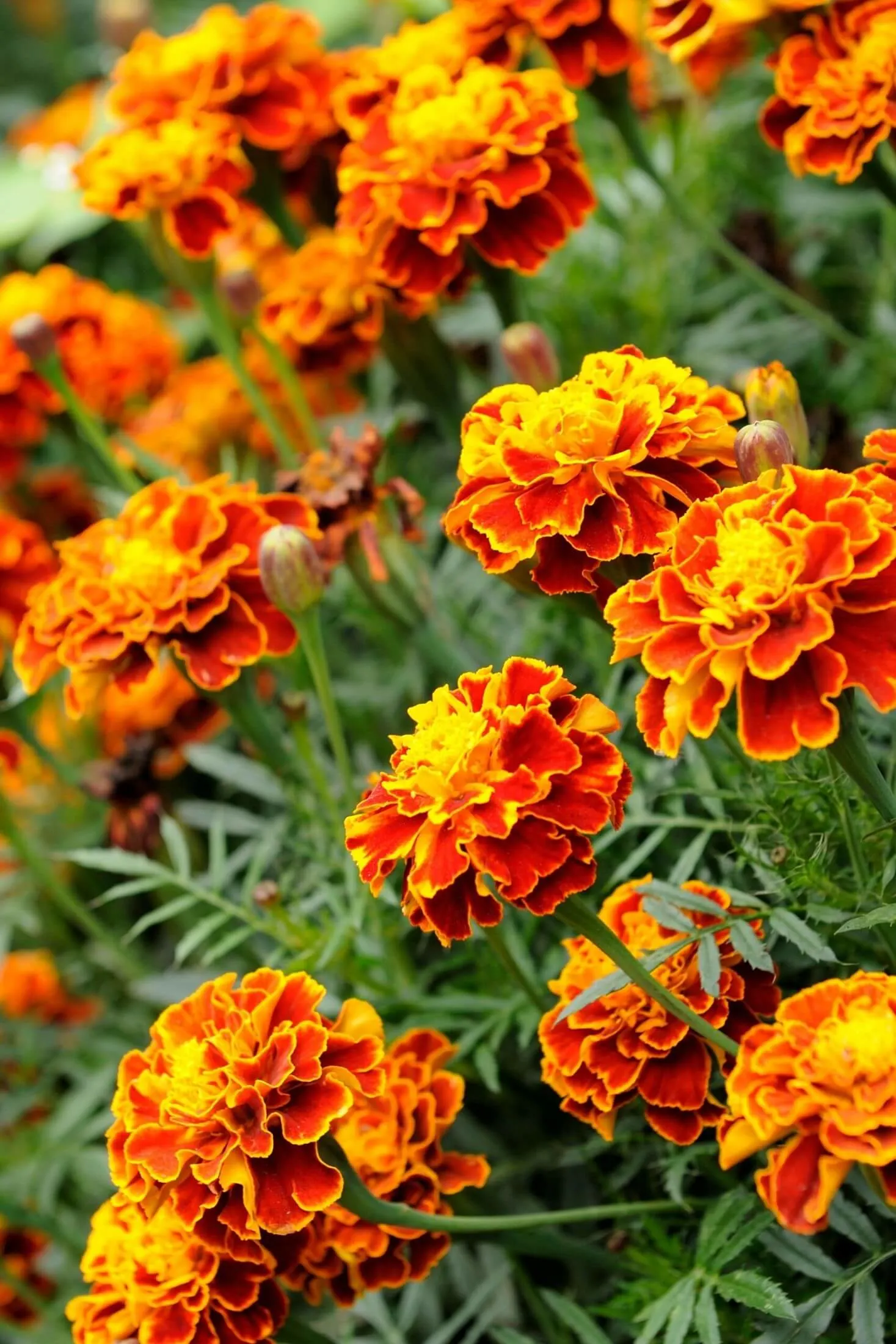
Nasturtiums:
Nasturtiums are a GREAT sacrificial garden plant. Not only are they beautiful little flowers with peppery leaves that can be added to salads, but they also attract pests away from pumpkin plants to prevent any pesky bugs from munching on the leaves or fruit.
While they attract pests, they also attract pollinators, which will help to produce a healthy and productive pumpkin crop!
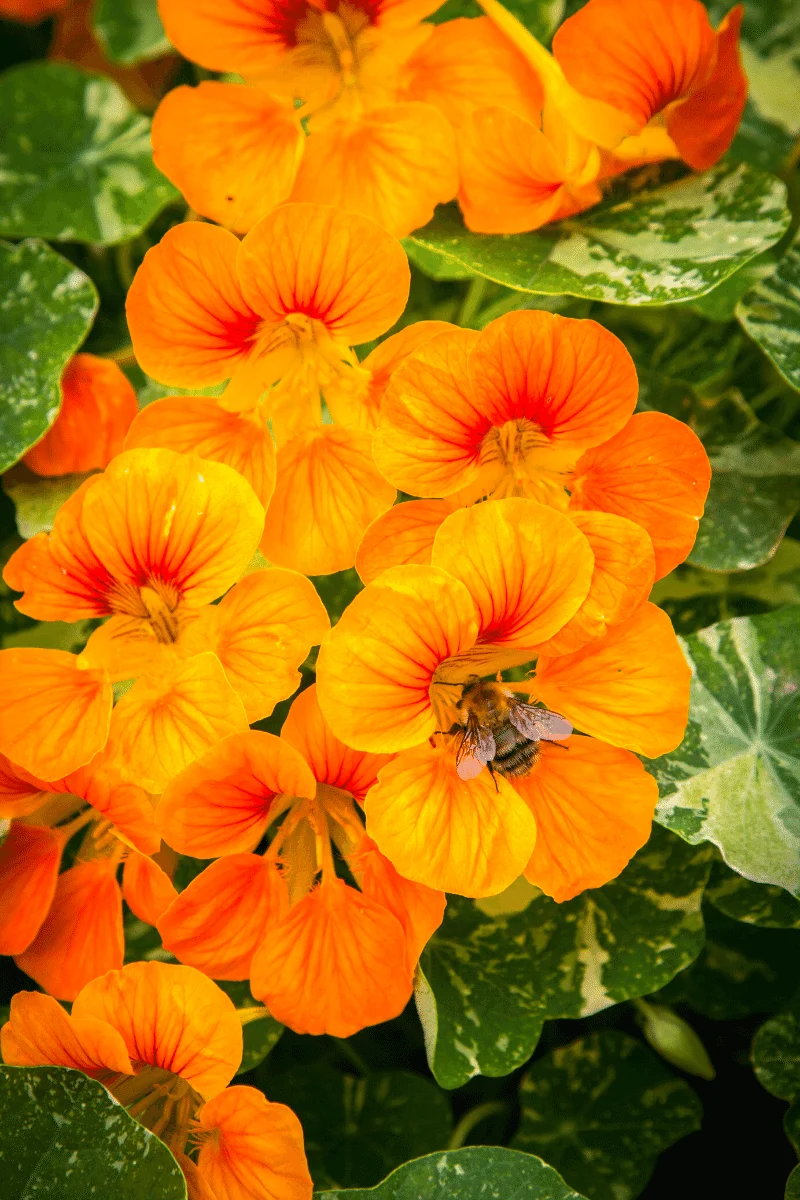
Sunflowers:
As another sacrificial garden plant, sunflowers are perfect for attracting pests away from your pumpkin plants, like they do with arugula. Additionally, they're tall and slender like corn stalks, meaning they're great for climbing pole beans or vining nasturtiums, making them an ideal companion for pumpkins in the garden.
Sunflowers also attract beneficial pollinators. Can't have pumpkins without pollination!
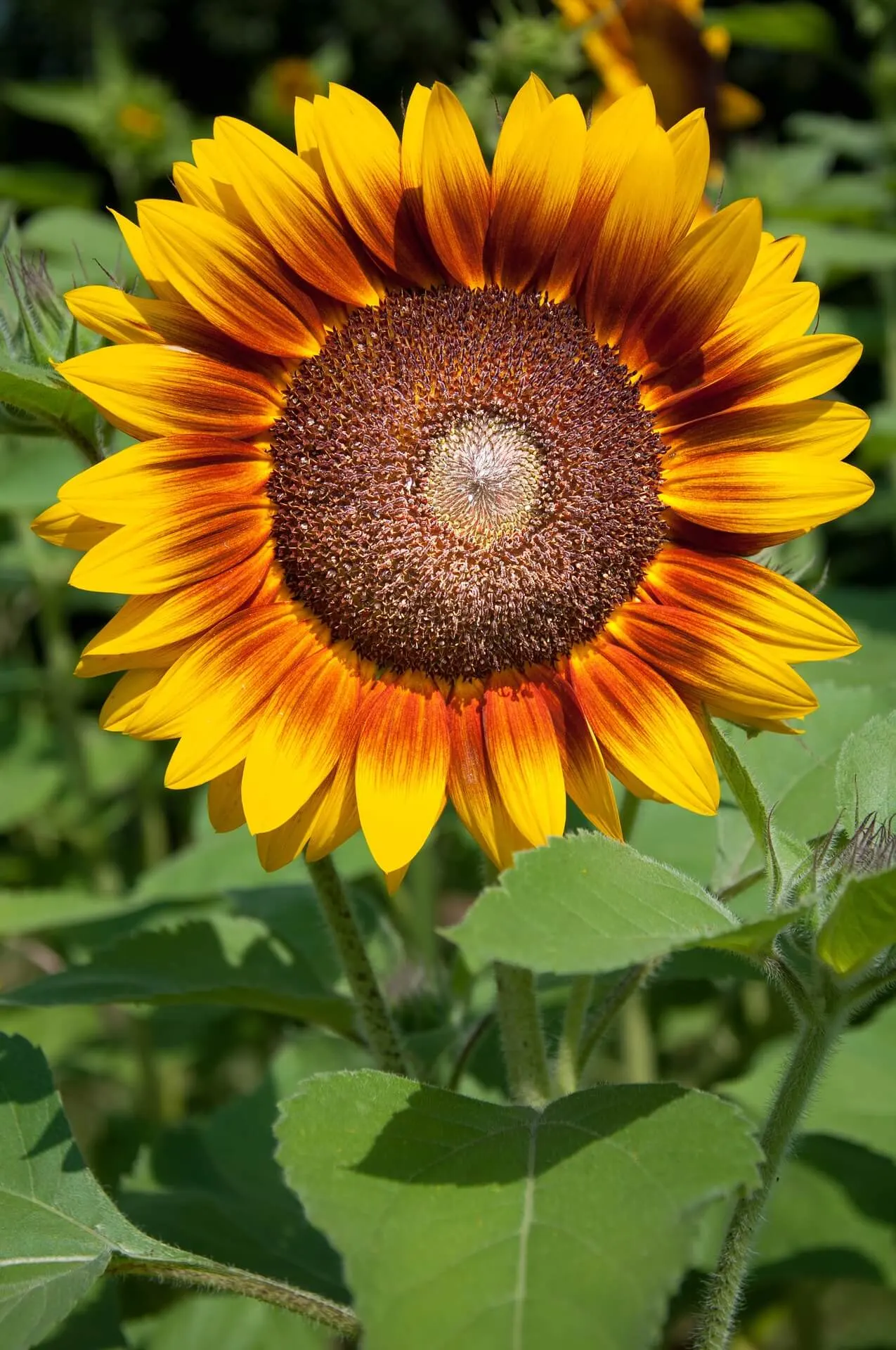
Herbs:
Garden wisdom states that planting marjoram near pumpkin plants will improve their flavor. I haven't personally tested this, but if you have, let me know your thoughts in the comments!
Chives, if left to flower, attract pollinators to ensure good harvests, and will also deter the cucumber beetle. Basil will also help to reduce pests without pesticide intervention!

Radishes:
Planting radishes near pumpkin plants helps to attract hungry beetles away from pumpkin vines to snack on their leafy greens. These quick to mature veggies can be interspersed in your pumpkin garden and will be ready for harvest quickly, meaning you can get them out of the garden before the pumpkin vines take over, and get more production out of the same space.
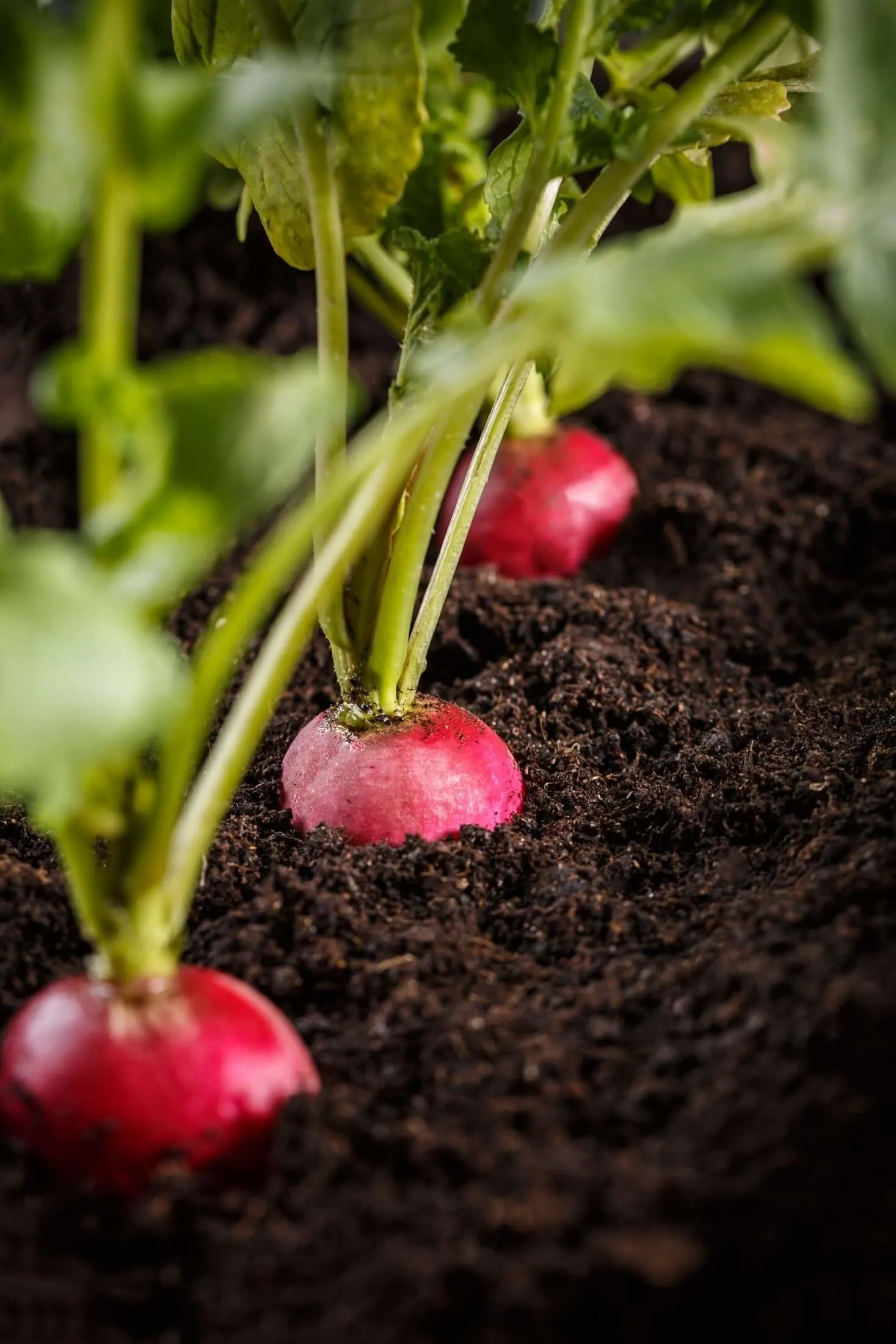
Avoid These Companion Plants for Pumpkins
Potatoes:
Potatoes and pumpkins do not get along! Harvesting potatoes near the delicate roots of your pumpkin plant is a recipe for disaster. Additionally, pumpkins are hungry for sunlight and are ruthless when it comes to getting it, they can easily grow over and overtake your potato plant, choking it out or limiting its production.
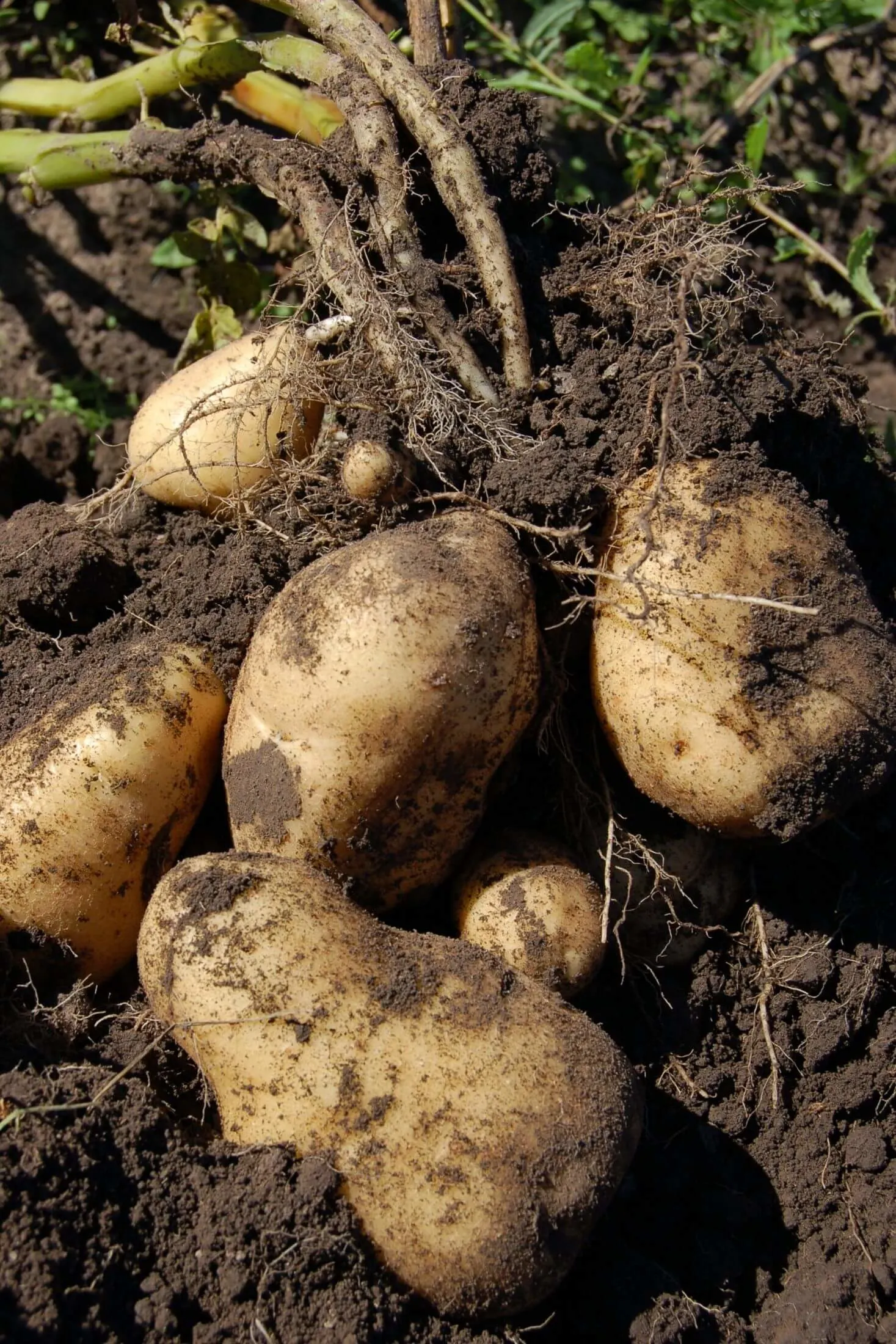
Brassicas:
Plants like cabbage, brussels sprouts, kale, cauliflower, and broccoli can stunt the growth of pumpkins, so it's best to avoid planting them near your pumpkin patch. These brassicas are heavy feeders and can really uptake a ton of nutrients from the soil during the growing season leaving your pumpkin plant lacking. It's best to keep them in different corners of the boxing ring!
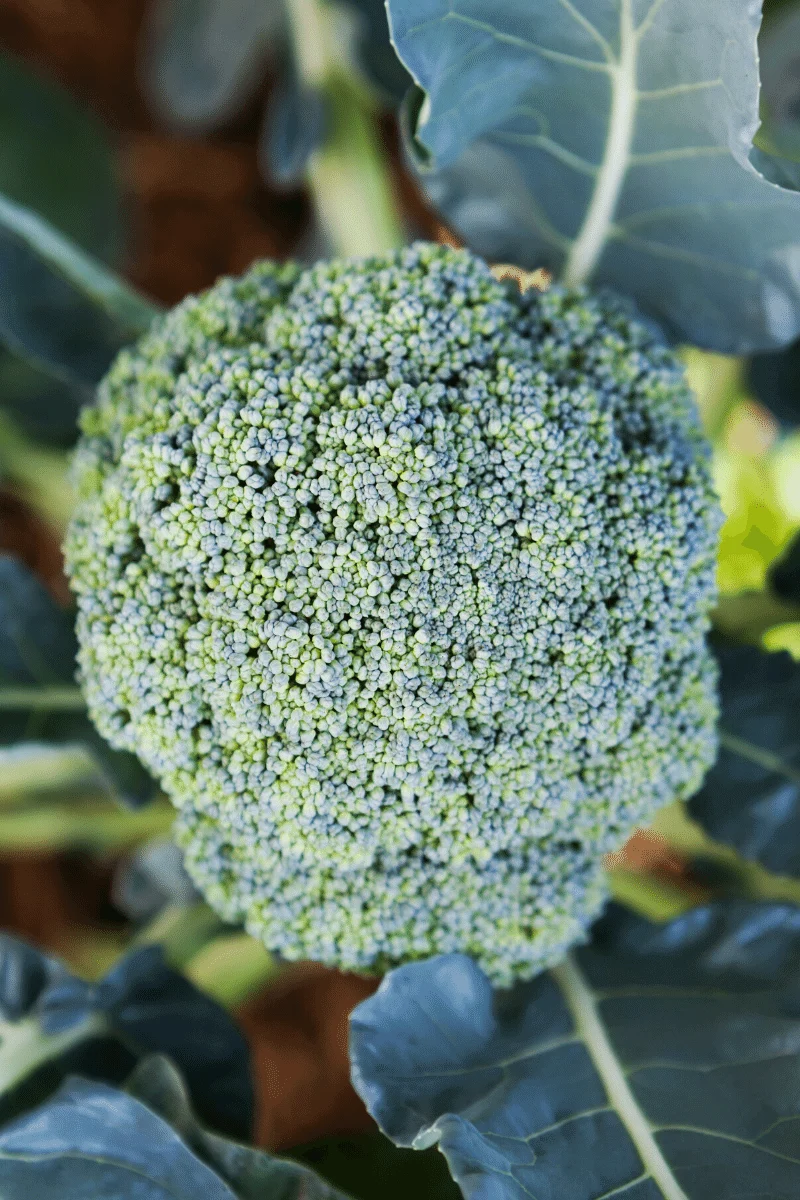
Other squash/melons:
Keeping similar vining plants in the same family as pumpkins will likely lead to stunted growth for all of them. Most plants in the cucurbit family, like watermelons or cantaloupes, have a sprawling growth habit and an insatiable appetite for sunlight. They'll end up competing against each other and both will lose out!
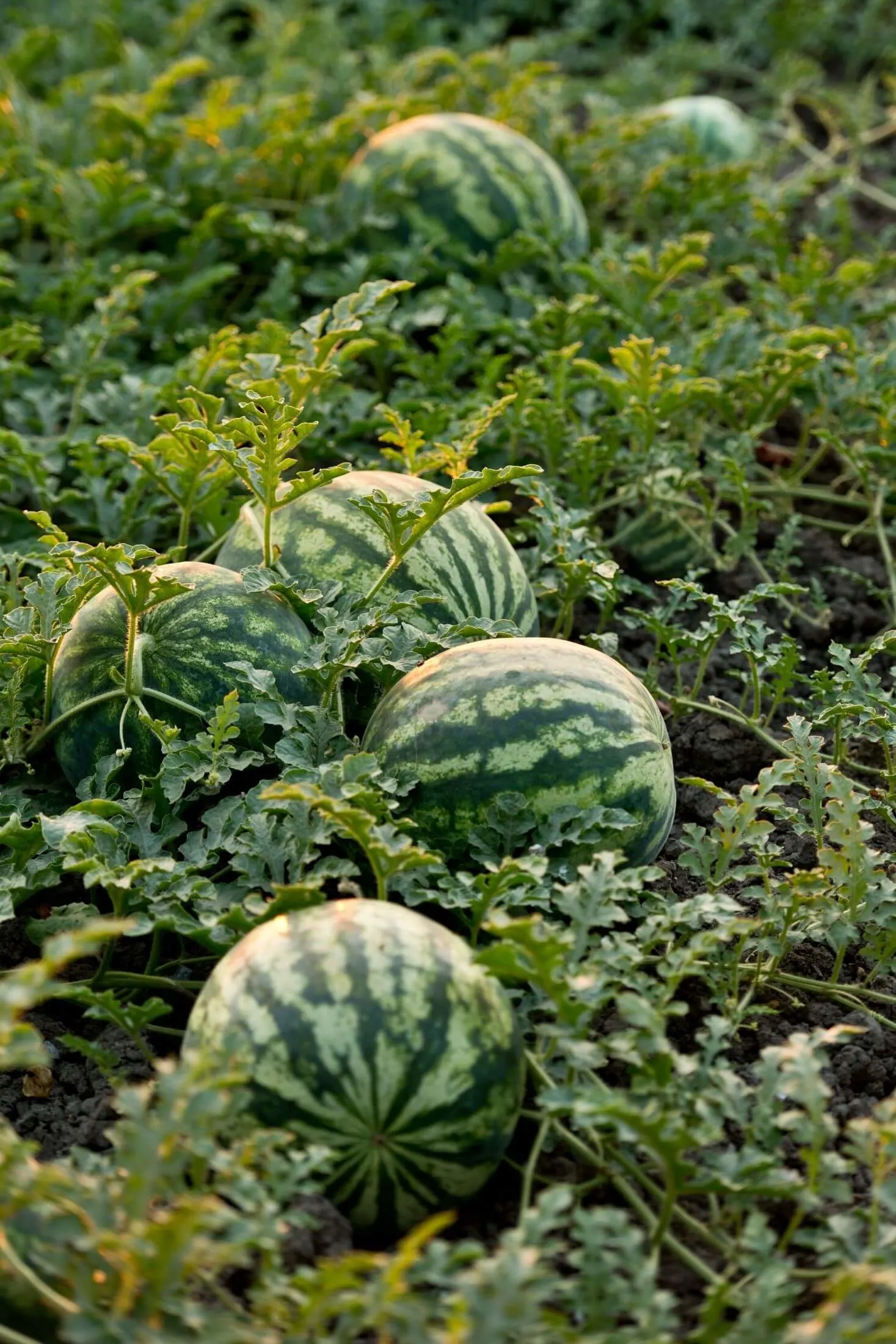
Final Thoughts
While pumpkins are not difficult to grow it's important to consider their companion plants in order to have a successful and bountiful pumpkin patch. By avoiding some plants and utilizing the benefits of others, you can help ensure your pumpkins reach their full potential!
The best pumpkin companions include radishes, nasturtiums, marigolds, and other flowers that attract pollinators like bees or butterflies with their bright colors and strong scents or herbs such as basil which repel pests without the use of pesticides. If you want to reduce competition between neighboring plants for resources (sunlight) it's best to avoid growing pumpkins near potatoes, cabbage, kale, and broccoli. Instead, intersperse quick-maturing radishes among the pumpkin plants to lure pests away and attract pollinators.
Can't Get Enough Companion Planting?
Pin This Pumpkin Companion Plants Guide!
